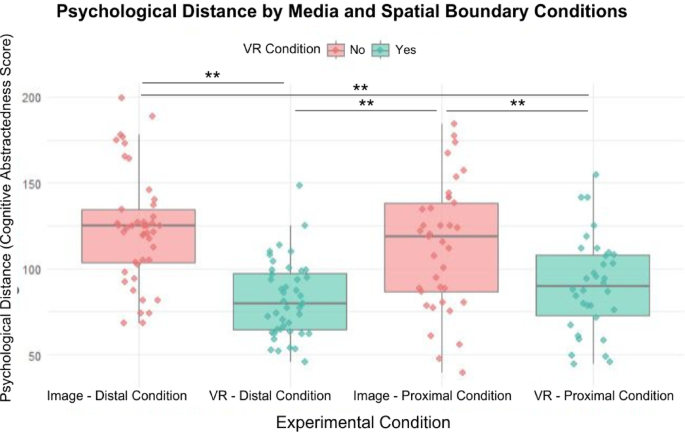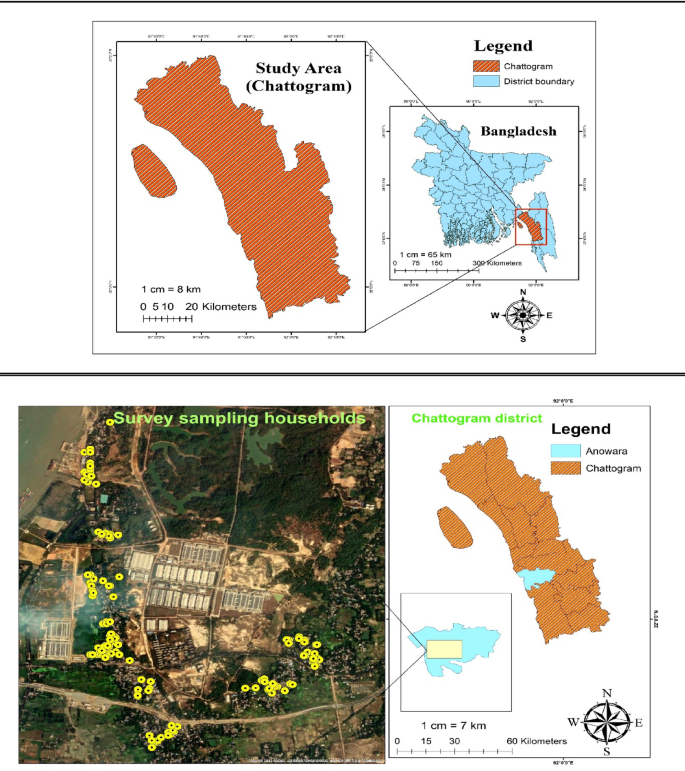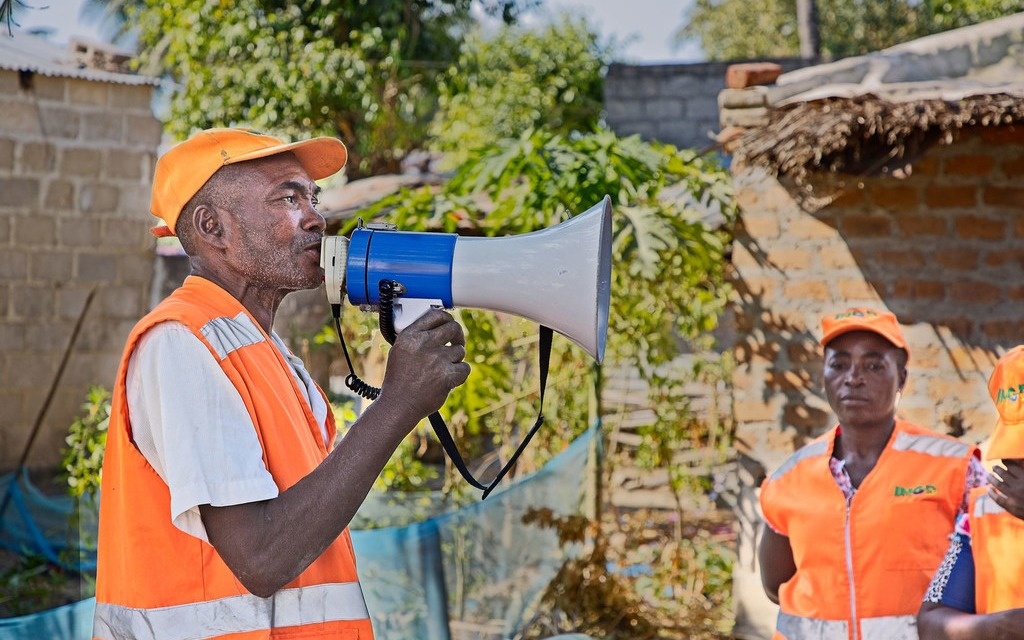Report on the Intersection of Extreme Heat, Mental Health, and Sustainable Development Goals
Executive Summary
Increasing global temperatures, a direct consequence of climate change, pose a significant threat to public health, disproportionately affecting vulnerable populations. This report examines the heightened risk of heat-related morbidity and mortality among individuals with schizophrenia. The convergence of clinical symptoms, medication side effects, and socioeconomic factors places this group at extreme risk, highlighting critical gaps in public health policy and climate adaptation strategies. Addressing this issue is essential for achieving several Sustainable Development Goals (SDGs), including SDG 3 (Good Health and Well-being), SDG 10 (Reduced Inequalities), SDG 11 (Sustainable Cities and Communities), and SDG 13 (Climate Action). This report outlines the multifaceted nature of the problem and underscores the urgent need for targeted interventions, inclusive policies, and sustained research funding to protect this marginalized community.
Climate Change and Public Health: An Intensifying Challenge (SDG 3 & SDG 13)
The increasing frequency and intensity of heat waves, driven by climate change, represent a direct challenge to SDG 13 (Climate Action) and have severe implications for SDG 3 (Good Health and Well-being). Recent weather events demonstrate a clear trend of rising temperatures and associated public health emergencies.
Escalating Heat Events and Health System Strain
- The average rate of heat waves in the U.S. has tripled since the 1960s.
- In 2024, an estimated 255 million Americans were exposed to a life-threatening heat dome.
- A June heat wave in New York City resulted in 341 emergency room visits for heat-related illnesses.
- From 2018 to 2022, New York City recorded an estimated 525 annual deaths directly attributable to heat, with hundreds more exacerbated by it.
Disproportionate Impacts on Individuals with Schizophrenia (SDG 3 & SDG 10)
The impact of extreme heat is not evenly distributed, creating profound inequalities that contravene SDG 10 (Reduced Inequalities). Individuals with schizophrenia, representing approximately 3.7 million people in the U.S., face a compounded risk profile due to a combination of clinical, pharmacological, and social factors.
Key Vulnerability Factors
- Clinical and Cognitive Impairment: Symptoms such as delusions, hallucinations, and cognitive deficits can impair an individual’s ability to recognize signs of overheating (e.g., thirst, high body temperature) and take protective actions like hydrating or seeking cooler environments. This was tragically illustrated during the 2021 British Columbia heat dome, where individuals with schizophrenia accounted for 16% of the 619 fatalities, despite comprising only 1% of the population.
- Pharmacological Side Effects: Commonly prescribed antipsychotic medications can interfere with the body’s ability to thermoregulate. These drugs often have anticholinergic properties that block acetylcholine, a neurotransmitter essential for sweat production. They can also increase muscle activity, generating more internal body heat.
- Socioeconomic and Systemic Barriers: Individuals with schizophrenia often experience higher rates of poverty, housing instability, and social isolation, limiting their access to critical resources like air conditioning. This aligns with challenges addressed in SDG 11 (Sustainable Cities and Communities). Furthermore, social stigma can deter them from seeking help, and systemic failures are evident in the lack of explicit inclusion of this group in municipal heat response plans.
Strategies for Mitigation and Adaptation (SDG 3, SDG 11, SDG 13)
To safeguard this vulnerable population and advance progress on the SDGs, targeted and multi-level interventions are required. These strategies must bridge clinical practice, community support, and public policy.
Clinical and Community-Level Responses
- Clinician Education: Efforts are underway to educate healthcare professionals about the specific heat-related risks associated with schizophrenia and its treatments. Dr. Siqi Xue and colleagues developed educational pamphlets for physicians on medication management during extreme heat.
- Proactive Patient Monitoring: Clinicians are taking personal initiative to check on vulnerable patients during heat waves, including visiting homeless shelters to provide care and educate staff.
- Institutional Protocols: Facilities like McLean Hospital in Massachusetts have implemented modifications to mitigate heat risks, while the Centre for Addiction and Mental Health in Canada has developed a heat wave response plan for safely discharging patients without stable housing.
Policy and Infrastructure Recommendations
Achieving SDG 11 requires cities to become more inclusive and resilient. This includes:
- Developing emergency plans that explicitly address the needs of people with schizophrenia.
- Implementing policies that ensure landlords adhere to maximum indoor temperature regulations.
- Providing free and accessible cooling devices or centers for at-risk populations.
Obstacles to Progress and Future Outlook
Despite growing awareness, significant challenges threaten to undermine efforts to protect individuals with mental illness from climate-related health threats, thereby impeding progress on SDG 3 and SDG 10.
Impact of Reduced Research and Healthcare Funding
Recent and proposed federal budget cuts pose a direct threat to essential services and research. The Trump administration’s actions include:
- Slashing nearly $18 billion from the National Institute of Health (NIH).
- Cutting almost $1.1 billion from the Substance Abuse and Mental Health Services Administration (SAMHSA).
According to the National Alliance on Mental Illness (NAMI), these reductions will halt critical research and programs designed to support people with mental illness. This lack of funding will widen the existing research gap concerning the nexus of climate change and mental health, preventing the development of evidence-based adaptation plans that explicitly consider the unique needs of this at-risk group.
Analysis of Sustainable Development Goals in the Article
1. Which SDGs are addressed or connected to the issues highlighted in the article?
-
SDG 3: Good Health and Well-being
- The article’s primary focus is on the severe health impacts of extreme heat, including heatstroke, heat-exacerbated deaths, and increased emergency room visits. It specifically details the heightened health risks for individuals with schizophrenia, linking their mental health condition directly to their physical well-being during heat waves.
-
SDG 10: Reduced Inequalities
- The article highlights the disproportionate vulnerability of a specific marginalized group: people with schizophrenia. It points out that this group faces compounded risks due to their illness, medication side effects, social stigma, poverty, and housing instability, leading to unequal health outcomes, as evidenced by the mortality statistics from the 2021 British Columbia heat dome.
-
SDG 11: Sustainable Cities and Communities
- The issues are framed within urban contexts like New York City and Phoenix. The article discusses city-level data on heat-related deaths and ER visits and examines the presence (or absence) of municipal heat response plans, directly connecting to the goal of making cities safe, resilient, and inclusive, especially in the face of climate-related disasters.
-
SDG 13: Climate Action
- The article explicitly states that the “increased frequency and intensity” of heat waves are “due to climate change.” It discusses the need for adaptation strategies, such as heat wave response plans and improved healthcare preparedness, to strengthen resilience against climate-related hazards.
2. What specific targets under those SDGs can be identified based on the article’s content?
-
Under SDG 3 (Good Health and Well-being):
- Target 3.4: Reduce premature mortality from non-communicable diseases and promote mental health. The article directly addresses this by discussing hundreds of annual heat-exacerbated deaths, where heat aggravates underlying illnesses, and by focusing on the unique life-threatening risks faced by people with a severe mental illness.
- Target 3.d: Strengthen capacity for early warning, risk reduction, and management of health risks. The article discusses the need for better communication of heat risks to patients, the development of educational pamphlets for clinicians, and the creation of heat wave response plans within mental health centers, all of which are measures to manage the health risks of extreme heat.
-
Under SDG 10 (Reduced Inequalities):
- Target 10.2: Empower and promote the social inclusion of all, irrespective of disability or other status. The article highlights how social stigma and exclusion deter people with schizophrenia from seeking medical help and how they are “likely to be triaged last” in an ER, demonstrating a clear need to address their social and medical exclusion.
- Target 10.3: Ensure equal opportunity and reduce inequalities of outcome. The statistic that people with schizophrenia constituted 16% of deaths during a heat dome despite being only 1% of the population is a stark example of an inequality of outcome that needs to be addressed.
-
Under SDG 11 (Sustainable Cities and Communities):
- Target 11.5: Significantly reduce the number of deaths and people affected by disasters, with a focus on protecting the poor and people in vulnerable situations. The article’s entire premise is about reducing deaths from heat waves (a climate-related disaster) by focusing on a particularly vulnerable group—people with schizophrenia, who often face poverty and housing instability.
- Target 11.b: Increase the number of cities implementing integrated policies and plans for inclusion and adaptation to climate change. The article points to the lack of such plans by noting that only Arizona has a dedicated heat office and that its plan does not even mention “schizophrenia,” indicating a gap in inclusive, adaptive urban planning.
-
Under SDG 13 (Climate Action):
- Target 13.1: Strengthen resilience and adaptive capacity to climate-related hazards. The article discusses various measures to build resilience, such as adjusting medications, using fans and air conditioning, creating specific discharge plans for patients, and educating shelter staff, all aimed at adapting to the hazard of extreme heat.
- Target 13.3: Improve education, awareness-raising, and human and institutional capacity on climate change adaptation. The efforts by Dr. Xue and her colleagues to create and circulate educational materials to clinicians and check in on vulnerable patients are direct examples of building human and institutional capacity to adapt to the impacts of climate change.
3. Are there any indicators mentioned or implied in the article that can be used to measure progress towards the identified targets?
-
Mortality and Morbidity Rates:
- Indicator: Number of heat-related deaths and “heat-exacerbated deaths.” The article provides a figure of “an estimated 525 New Yorkers died annually due to heat.” A reduction in this number would indicate progress.
- Indicator: Number of emergency room visits or hospitalizations due to heat-related illness. The article mentions “341 trips attributed to heat-related illnesses” during a NYC heat wave and a “9.7% increase in mental health-related hospital visits” associated with heat waves. Tracking these numbers measures the health burden.
-
Disproportionate Impact on Vulnerable Groups:
- Indicator: Mortality rate of specific vulnerable groups compared to the general population during a disaster. The statistic that “16% of the people who died [in the BC heat dome] were individuals diagnosed with schizophrenia” despite being 1% of the population serves as a powerful indicator of inequality. Reducing this disproportionality is a key measure of progress.
-
Climate and Weather Data:
- Indicator: Frequency and intensity of heat waves. The article states the “average rate of heat waves has tripled in the U.S since the 1960s.” This data is used to establish the urgency of the climate hazard.
- Indicator: Global and local temperature records. The mention that “2024 now holds the record for being the hottest year yet” is an indicator of worsening climate change.
-
Policy and Planning Implementation:
- Indicator: Number of states or cities with dedicated heat response plans. The article implies this is a key metric by stating, “Only one state in the country—Arizona—has an office for addressing heat risks.”
- Indicator: Inclusion of vulnerable groups in disaster planning. The fact that the word “schizophrenia” does not appear in Arizona’s heat plan is an indicator of a policy gap. Progress would be measured by the explicit inclusion of such groups in official plans.
-
Resource Allocation:
- Indicator: Funding for mental health services and related research. The article points to the cancellation of “$11.4 billion in post-COVID-19 funding” and slashes to the NIH budget as negative indicators, suggesting that tracking research and program funding is crucial for measuring commitment to addressing these issues.
4. Table of SDGs, Targets, and Indicators
| SDGs | Targets | Indicators Identified in the Article |
|---|---|---|
| SDG 3: Good Health and Well-being |
3.4: Reduce premature mortality and promote mental health.
3.d: Strengthen capacity for early warning and management of health risks. |
|
| SDG 10: Reduced Inequalities |
10.2: Promote social inclusion of all, irrespective of disability.
10.3: Reduce inequalities of outcome. |
|
| SDG 11: Sustainable Cities and Communities |
11.5: Reduce deaths and protect vulnerable people from disasters.
11.b: Increase cities with integrated policies for climate adaptation and inclusion. |
|
| SDG 13: Climate Action |
13.1: Strengthen resilience and adaptive capacity to climate-related hazards.
13.3: Improve education and awareness on climate change adaptation. |
|
Source: prismreports.org







